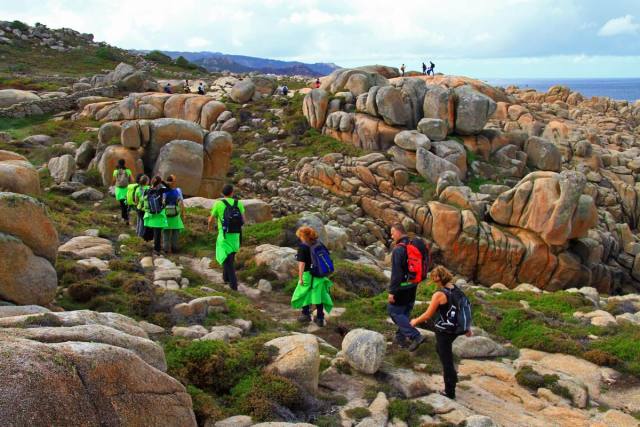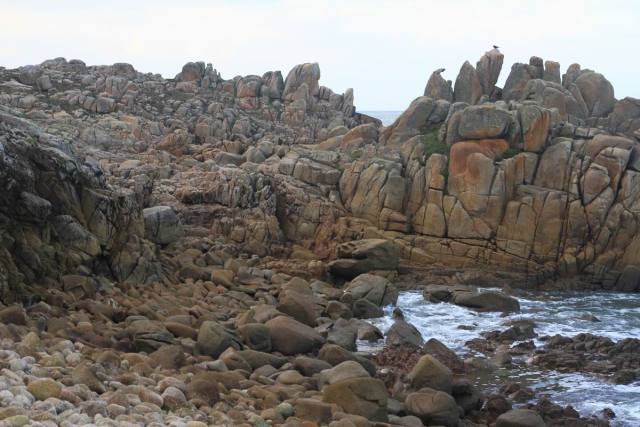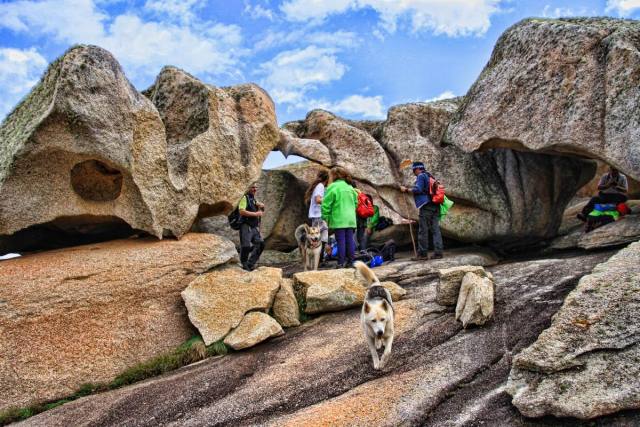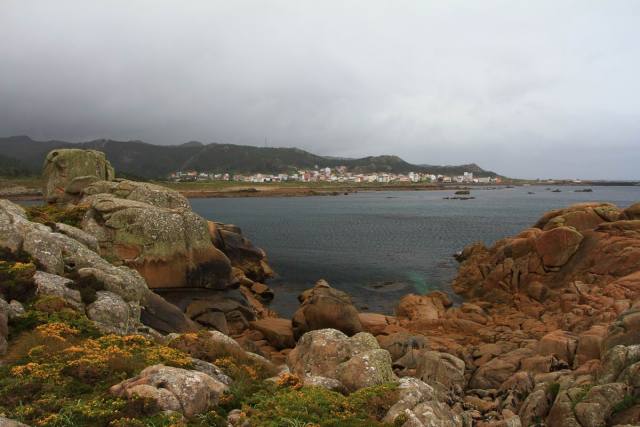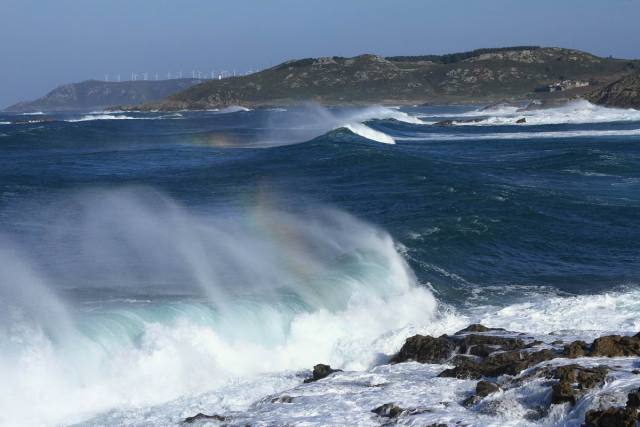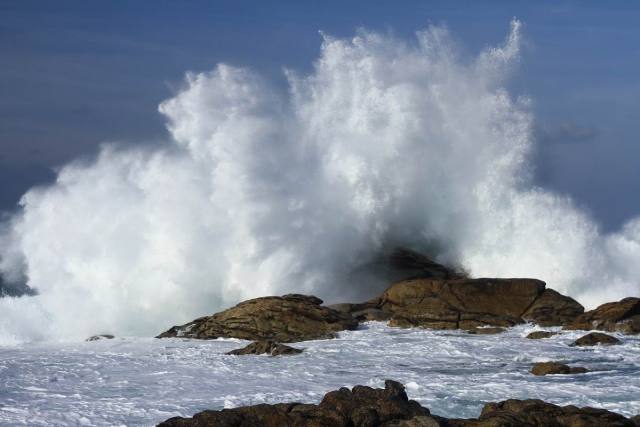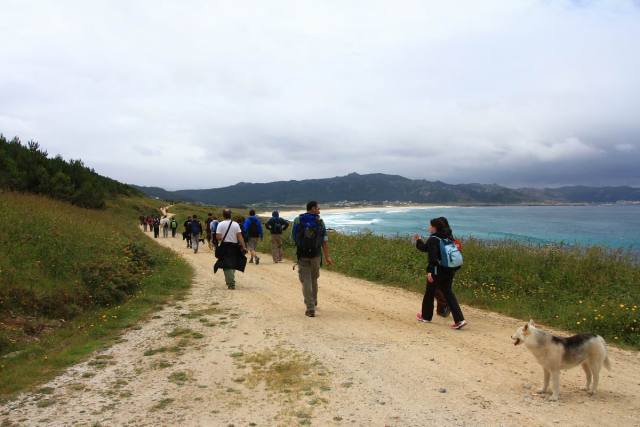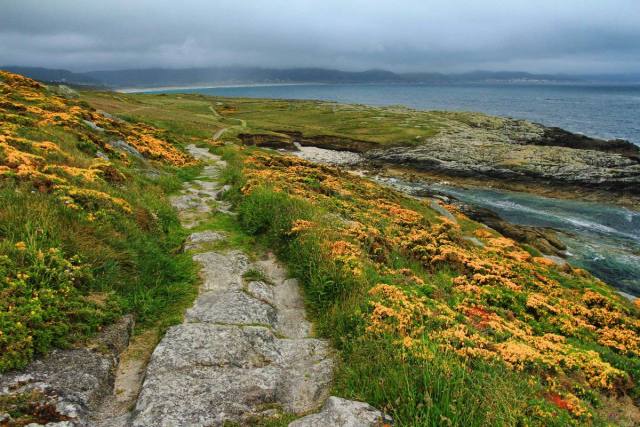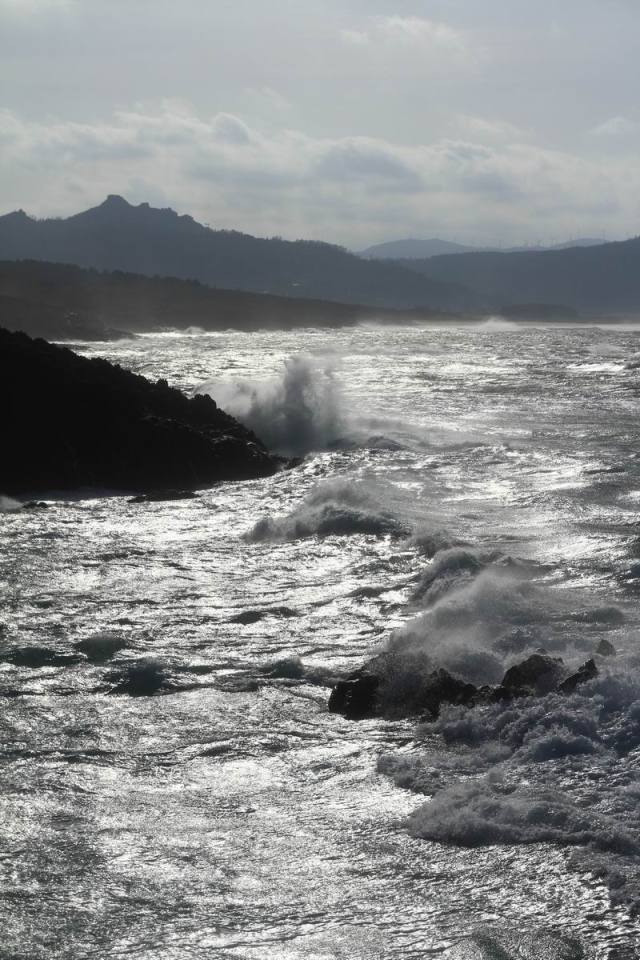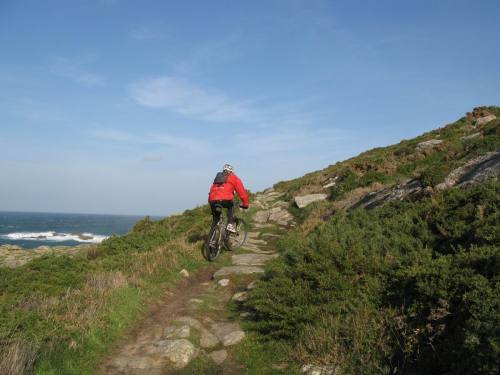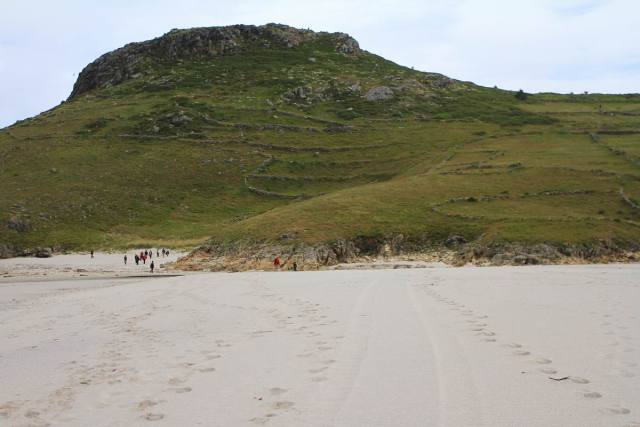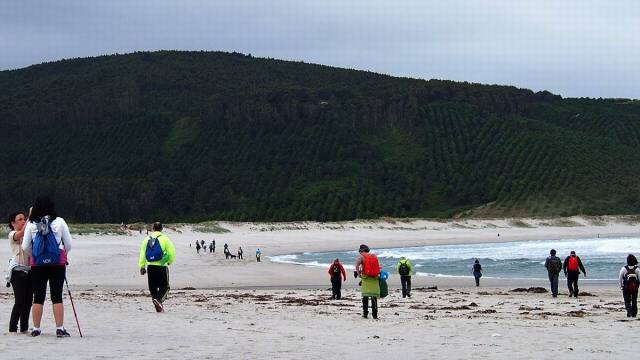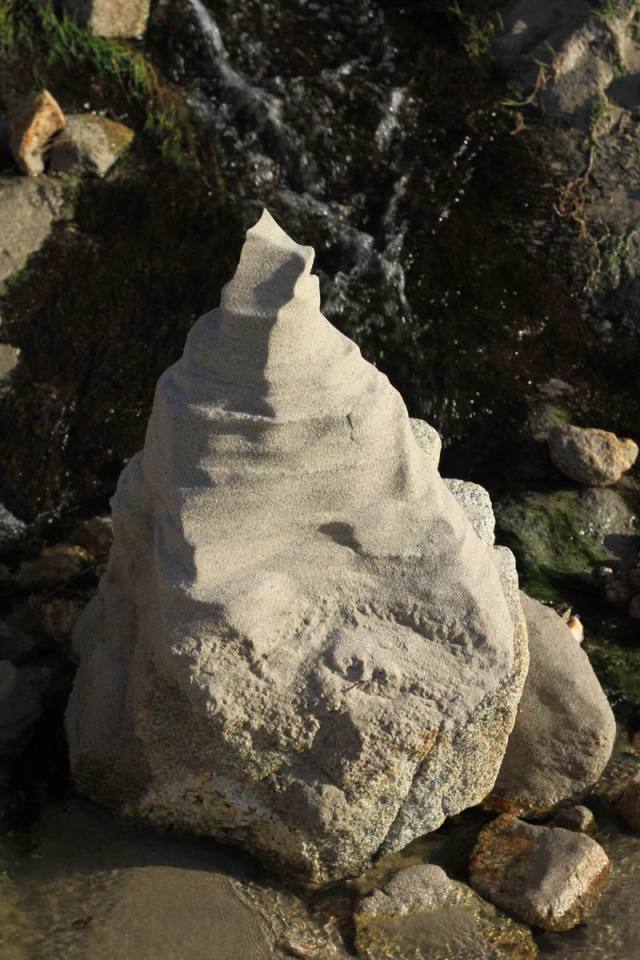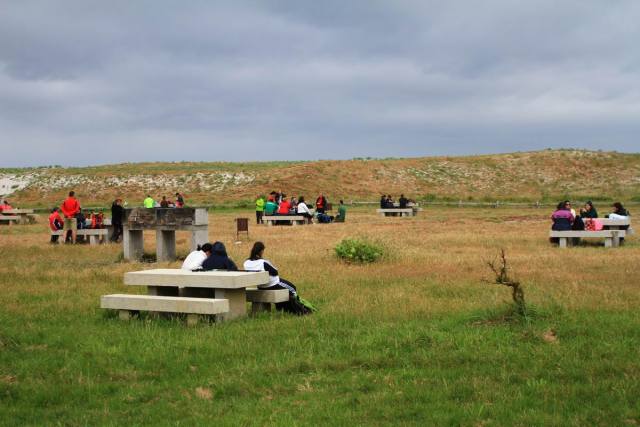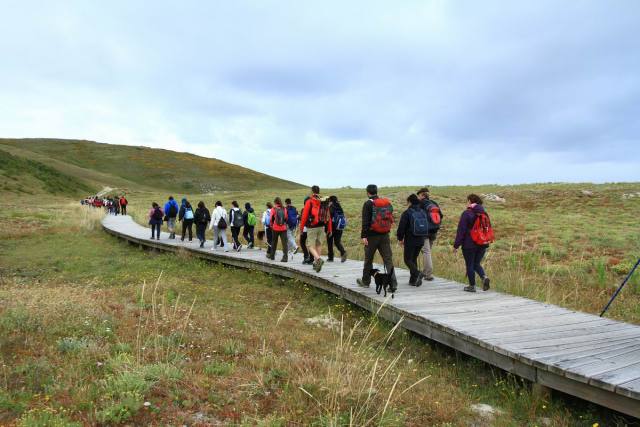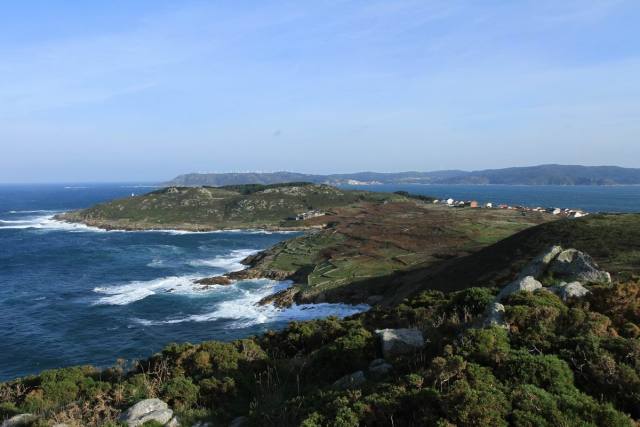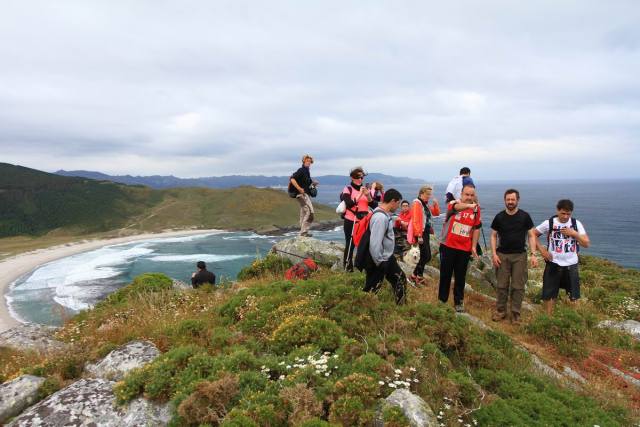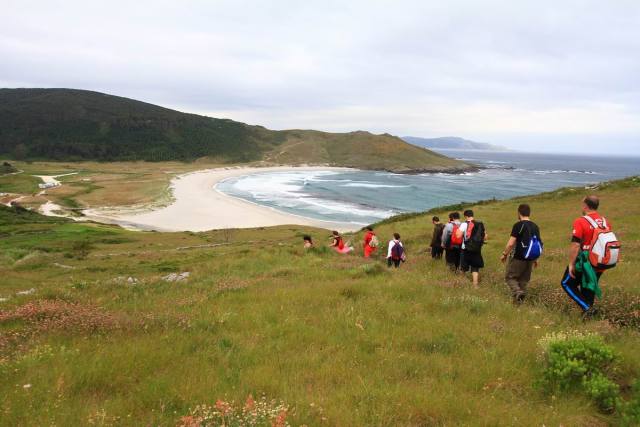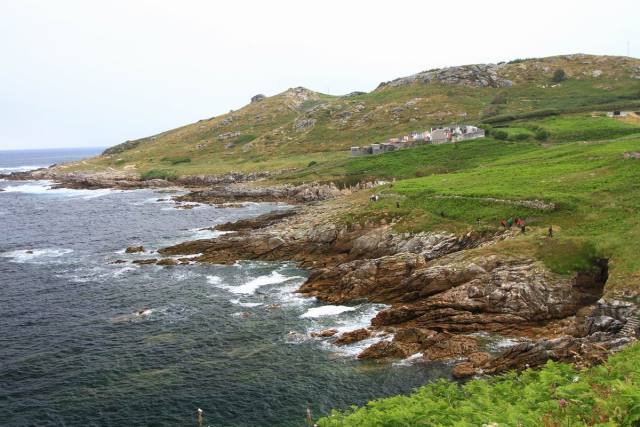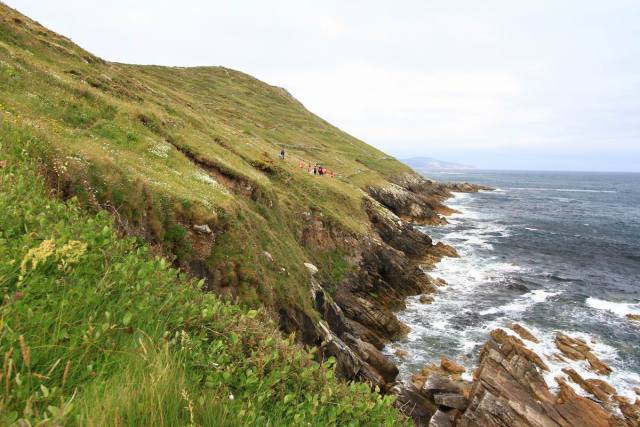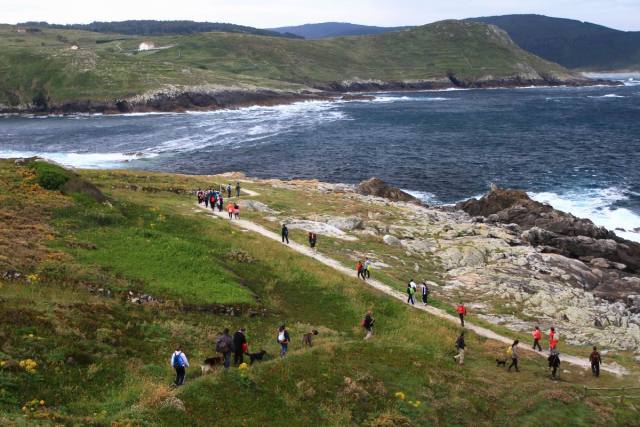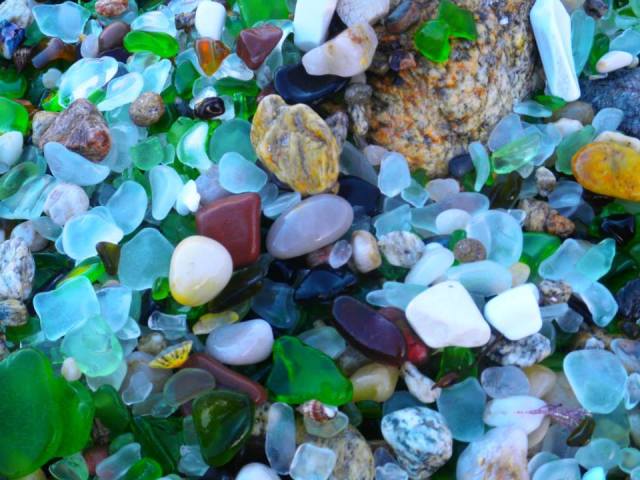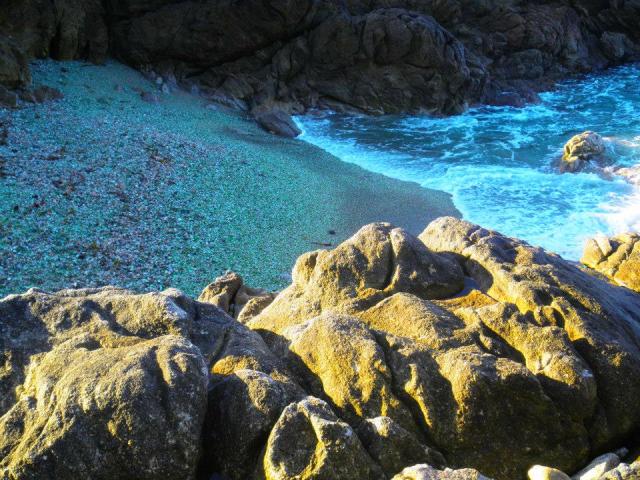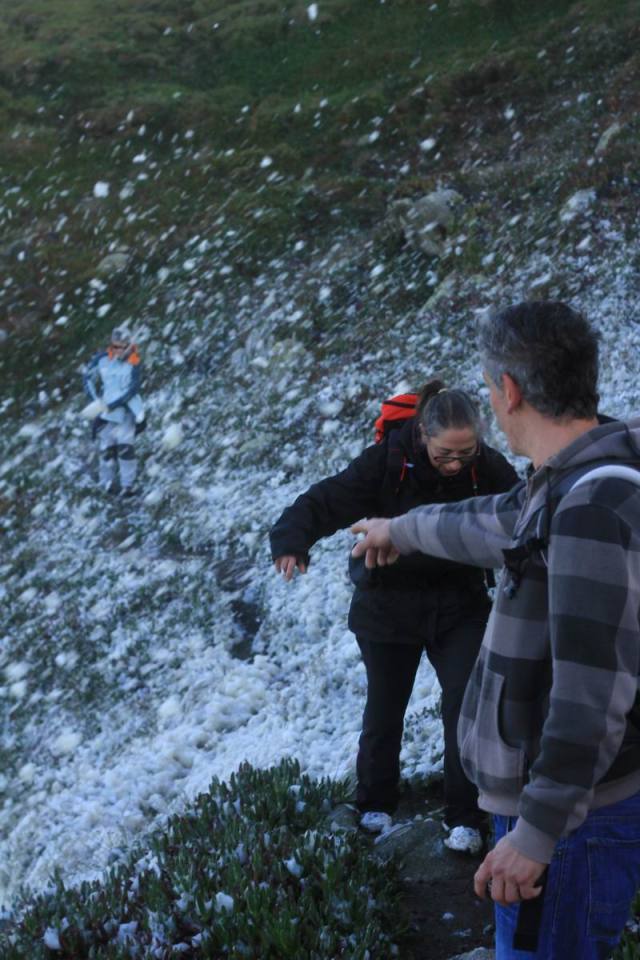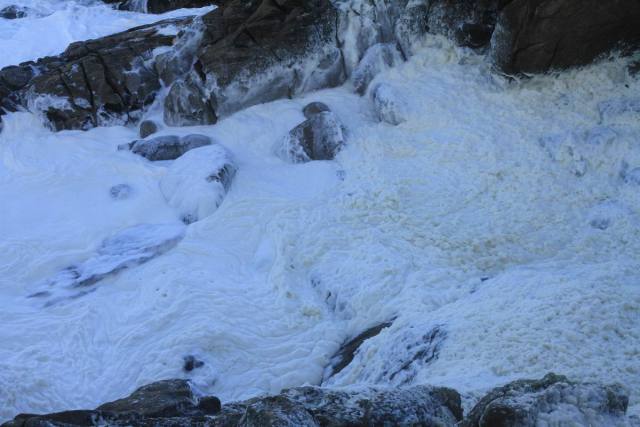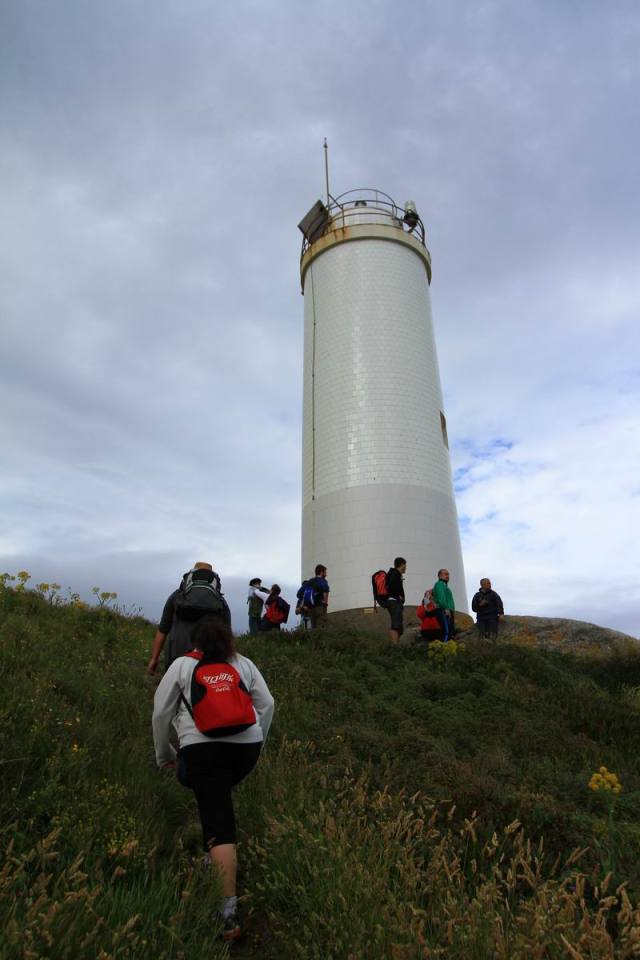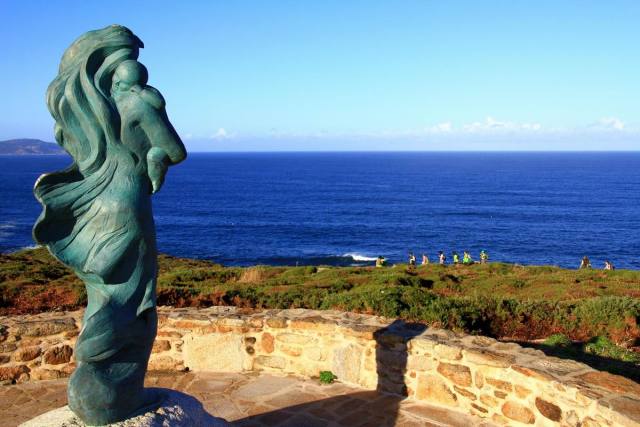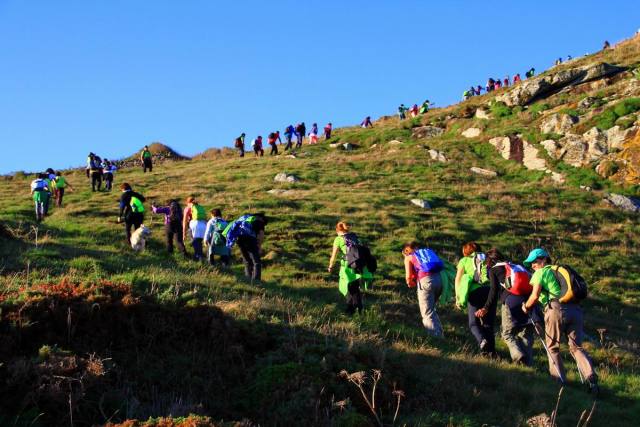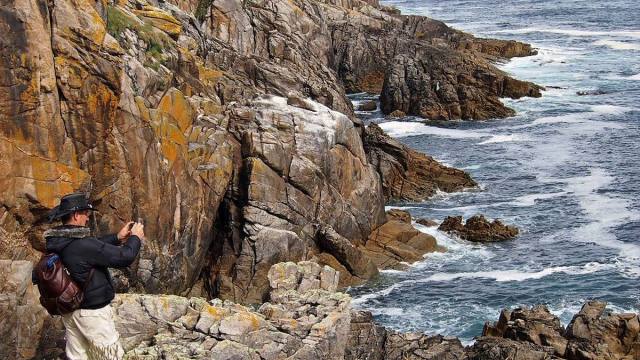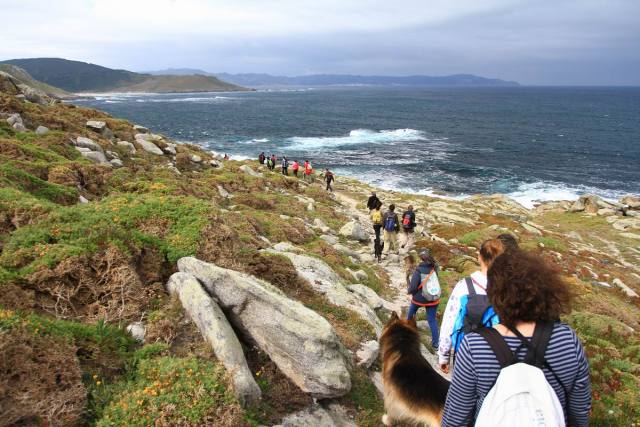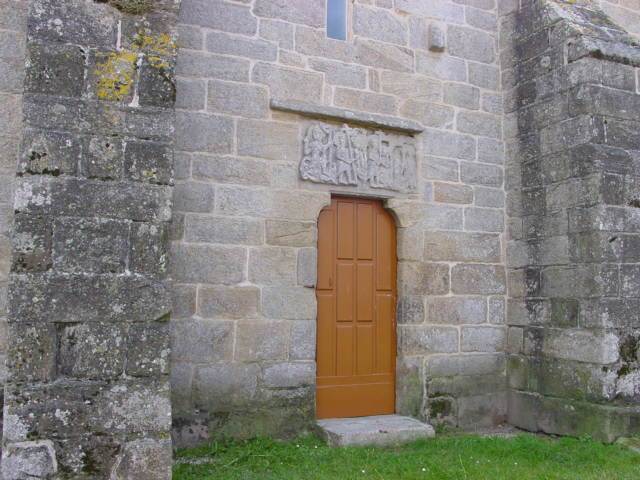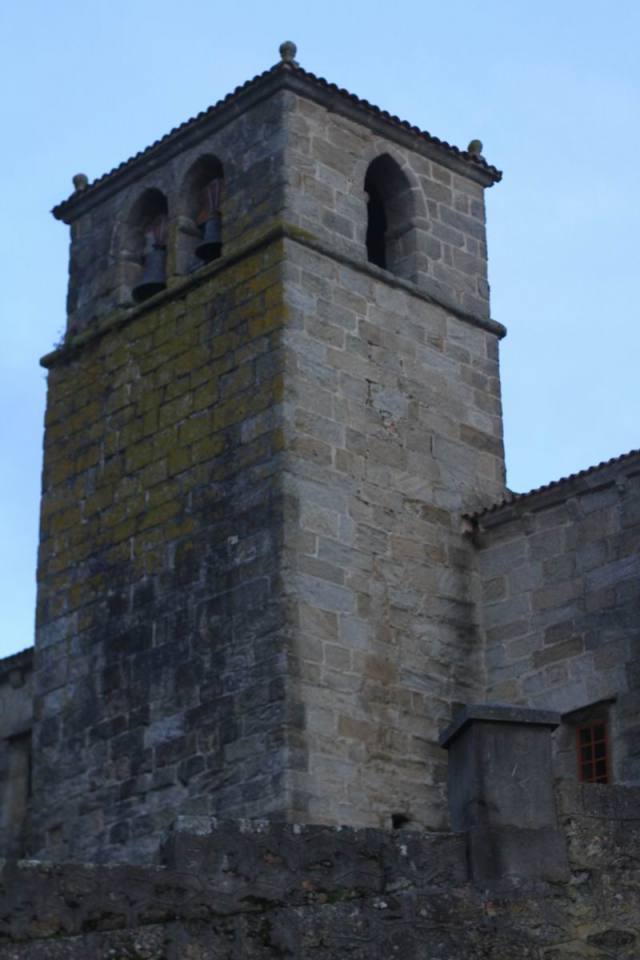
From Mórdomo, there is a route that takes us to the end of the beach Traba towards some other stretches that are considered to be one of the most amazing in this Camiño dos Faros.
All this coast leading to Camelle takes you back to Gulliver´s fairy tale and his world of rocks, a new kind of landscape in this route. Huge rock formations that are as beautiful as the Penedos de Traba, that surround the valley.
From Mórdomo we go through a succession of rock formations, “furnas” and small coves full of pebbles that seem to challenge the rough sea of Traba that hits Punta Corbeiro constantly.
Huge granite rocks of all shapes and sizes…
no images were found
… which will let our imagination run wild.
Huge rocks that shelter us when the rain starts, another unique image of this Camiño dos Faros.
It is then when, between Traba and Camelle, we reach the bay in Vimianzo that it is the only land lock of this village. Its name is Sabadelle, an old whaling port that had been already used by the Basque fishermen in the 18th century, and, nowadays, it is a cove formed by huge granite boulders. Nearby, there are some remains of an old medieval village and a petroglyphes called “Pé do Santo” (The foot of the Saint)
Doing this part of the route was being one of the most amazing experience in O Camiño dos Faros. A winter day, with the sea rougher than ever as it is typical in this season, had made us have the feeling that the day had flown by very fast (quite literally J ). Little was left to finish and we were arriving in Camelle.
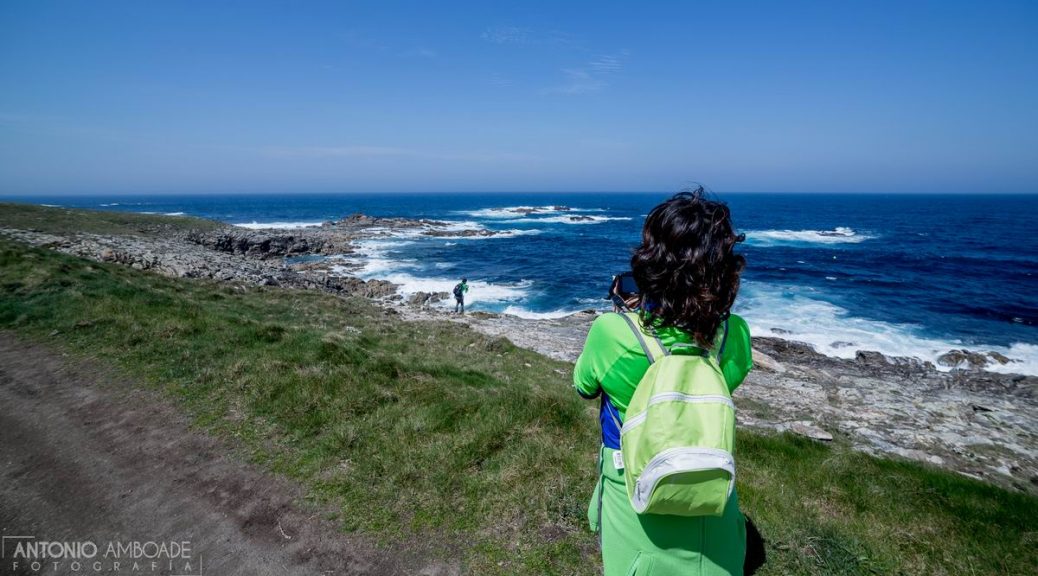
Leaving Soesto, we get to “Punta de Catasol”, from where we can see the waves of Soesto and we see the last lighthouses we have just walked by, the one in Roncudo in the foreground and the one in Laxe in the forefront.
In this part of O Camiño dos Faros, the sea is even rougher, a show for all our senses.
We go on with our Camiño dos Faros by taking the path that links Soesto and Traba by the sea. Although it is kind of windy, it is sunny and in this part of the route it is much easier to walk and we can relax our legs after the million of stones the route is full of…and there are still loads of them left!
In this route, among the rocks, there are small coves as this one “Castrallón” and some other ones which are a bit bigger as the beach Arnado.
In front of it, from the left to the right we have, “La isla de los condenados” (the islands of the condemned”), the small island, Ataín and towards Traba, the island Teixoeira. We still have wind of the South and it is a great pleasure to look at the sea and enjoy the view.
In one of the stretches that used to be the way taken by the farmers with their cow carts, we meet a cyclist, O Camiño dos Faros is a hiking-trail that cannot be done by bike. There are small paths full of gorses, lots of rocks and huge ascents. But there are some other stretches that can be done by bike, for example, this one that goes from Soesto to Traba.

Soesto is a calm and familiar beach placed somehow at the back of the village Laxe. We get there by taking Os Camiños dos Faros after descending the Rock. There are other options: taking a hiking-trail that starts in the village or by taking the road, turning off right where the “Pazo de Leis” is.
This beach has white and fine sand, with open sea and it is very windy with big waves being one of the spots chosen by surfers to go surfing.
When we go through the stream in Soesto, we stop to take a photo as the shapes are perfect. O Camiño dos Faros is an art gallery.
Next to the beach there is an area with tables and benches of stone to make a stop to get something to eat and drink in our route.
From there, we leave Soesto by the wooden walkway to the beach and the lagoon of Traba.
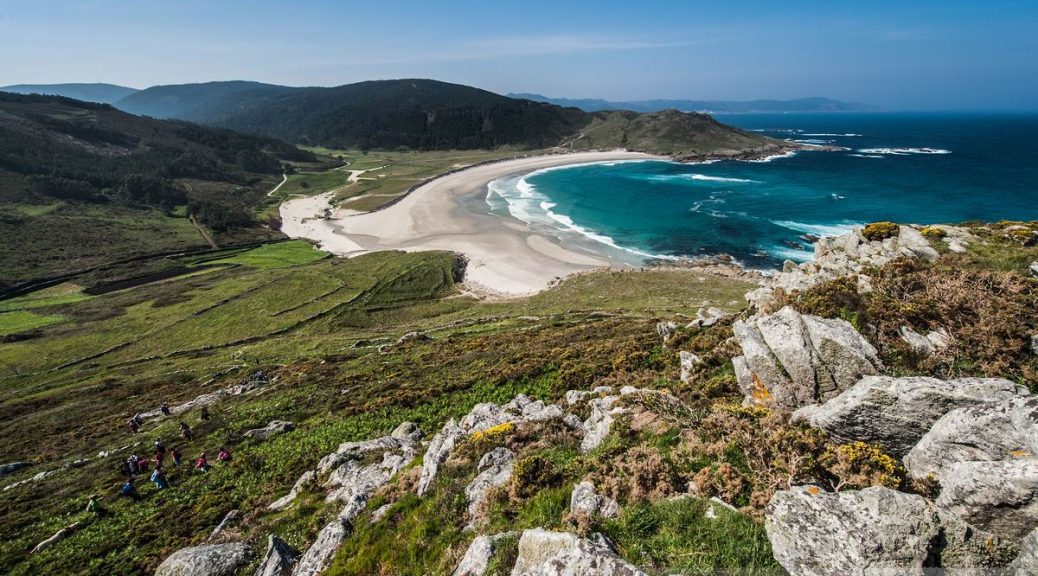
From the summit we have two other awesome panoramic views. Looking towards the North, the Roncudo, and Corme on the foreground. In the forefront, the MountInsua that we have walked around till the lighthouse in Laxe, the “Playa de los Cristales” and Baleeira.
In the South, we can see the beach Soesto with the sea hitting hard, and in the foreground, the Punta Catasol, a privileged viewpoint.
We descend from the Rock Castro to the beach Soesto, with this feeling of freedom A Costa da Morte provides us with. This Camiño dos Faros is amazing, when you become a trasno you will agree with me for sure.

The next goal in this Camiño dos Faros is the Rock Soesto. After walking by the cemetery, we take the turn on our right that will lead us to a small path along which we walk the Bay Baleeira
Before the existence of O Camiño dos Faros, there weren´t any hiking-trails. The feeling of vertigo when walking along these cliffs is really huge although there is always room for error to avoid any fatal consequence.
Before reaching the “Punta do Castro”, the path turns to the left to go up the Rock of Soesto.
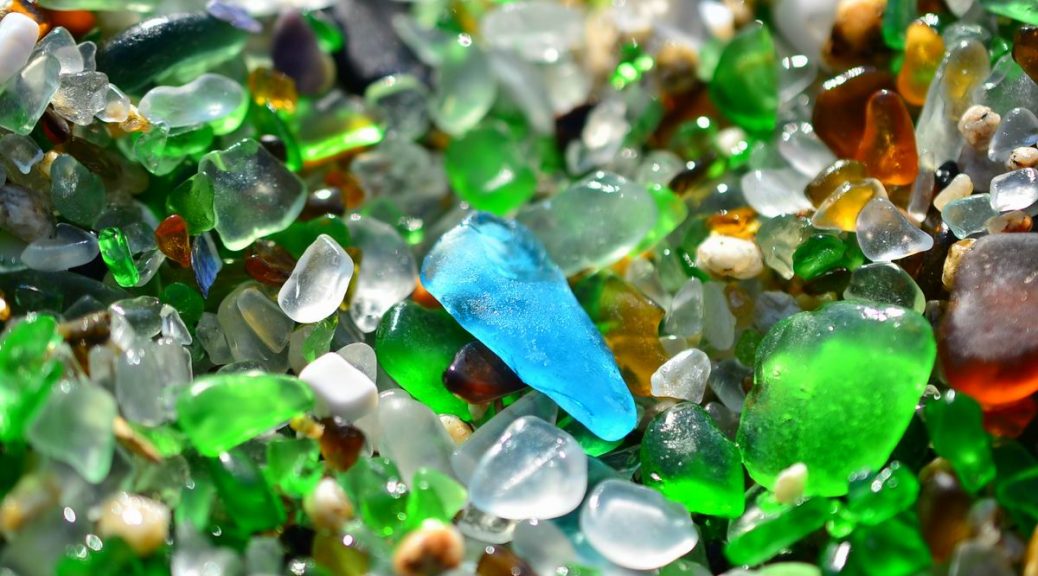
O Camiño dos Faros takes us close to the Beach Os Cristales, by taking this route of the Mount, with panoramic views of the Rock Soesto, Camelle and Arou.
Sometimes nature decides what to do, and the sea always brings back everything that it is thrown away in it. In this area of Laxe, there used to be a dump where bottles and other recipients were left. In these cliffs the sea somehow picked up this garbage debris and returned them transformed into art pieces polished by the sea leaving them in this small cove.
Two things are important to remember: To enjoy this unique spot and not to take any of these pieces of glass as it is completely forbidden.
Since we left from Malpica, we have already walked around 80 kilometers and we have already seen lots of things: lighthouses, beaches, all kind of cliffs, dunes, rivers, streams, forests, bays with a great ornithological value, petroglyphs, dolmens, “castros” , viewpoints, mills, typical villages, Malpica, Corme, Ponteceso, Laxe and all the things that we have seen yet.
The route goes on walking behind the cemetery, by taking a dirty track on the right that will lead us to the path of the Peñón of Soesto along the coast.

The sea hits this MountInsua constantly. We could appreciate so along the route but it is here where we can see how the water transforms into foam when hits this “furna”. You have to be very careful when walking along it. However, if the wind strength is adequate the experience is incredible.
Who says that it never snows in A Costa da Morte?
At this point you understand why it is called “A Furna da Espuma”

At the top of MountInsua we can the Lighthouse of Laxe. It was built in 1920 and it is similar to that of O Roncudo, a simple cylinder covered with white tiles. Its situation, as that of the rest of the lighthouses, is privileged.
The vessel “Playa Arnela” sank in 1972, a vessel from Corme that was arriving to port when it hit against the rocks of Punta da Insua. Only two members of the crew survived. “This sea never forgives” as it is usually said by the inhabitants of this area.
Close to the lighthouse we can see the bronze sculpture “A Espera” (The Waiting), a tribute not only to all the seamen but also to their women waiting for them to return.
On our right, the views of all the estuary of Corme-Laxe are amazing and if we have a look at our left the views of the open sea till Punta Boi are also awesome.

When there are no more houses, we keep on walking to the lighthouse, a path on our right indicates the beginning of this route along the MountInsua, that will lead us to the lighthouse. We leave on our right the Ría in Corme and Laxe after some days walking along it. It´s so close and far at the same time! One of the special characteristics of this Camiño dos Faros is that we can see not only all the route we have just done but also the points still left to be reached.
Before getting to the lighthouse, we see the first cliffs in this Mount Insua.
O Camiño dos Faros is not an easy route at all…it has lots of ups and downs, which will help you to keep fit. However, what is actually true is that you are rewarded with unique and amazing views.
Along the path of the Mount Insua, we get to the lighthouse and we go on along the open sea, where we will see 2 wonders of Nature: “La Furna da Espuma” and the “Praia dos Cristais” (the beach of pieces of glass).

This church was built at the end of 14th century and it has a great its historic-artistic value. It is an epitome of the gothic art related to the sea that is typical in a great deal of the Galician coast, from the period that was built some sculptures are still preserved.
This church has a unique nave with its square apse. Its façade is decorated with images of the Virgin. Inside the church, there are several graves dated back to the 13th century belonging to the Moscosos who governed these lands after the family Traba. The baroque altarpiece at the high altar was destroyed by lightning in1955, revealing an altarpiece made of stone.
From the atrium in the Church, we can see a very beautiful view of the port and of the beach in Laxe. Close to the church, which is currently used as a parking place, it is the grave of the ship-wrecked castaways of the English vessel Adelaide, which wrecked in the bay.


